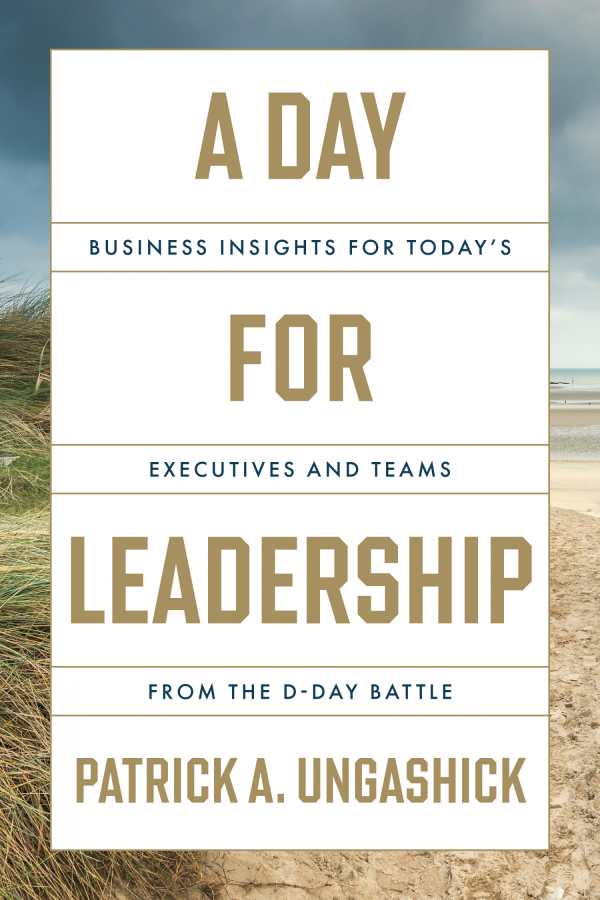A Day for Leadership
Business Insights for Today's Executives and Teams from the D-Day Battle
A case study in leading organizations through stressful times, A Day for Leadership makes D-Day, and the preparations leading up to it, its central example.
Patrick A. Ungashick’s rearward-gazing leadership guide A Day for Leadership derives lessons from World War II.
D-Day, the book notes, took years to plan, had countless moving parts, and involved millions of service members. It also changed the course of World War II. Analyzing facets of the invasion at Normandy, the book mines lessons from those experiences, including about handling high-stakes situations and adapting to major setbacks. Its close historical study centers it throughout, even as boardroom decisions are acknowledged to be less high stakes than war.
Discrete case studies of aspects of D-Day divide the book: There’s coverage of readying for the invasion, adjusting when tanks sank, and deciding where to deploy bombers. These examples are tethered to takeaway points for leaders related to topics like strategy, business process, and decision-making. External landscapes can change and present new challenges, the book notes; it suggests that failures can proffer lessons too.
There’s advice for creating a culture of accountability, and there are considerations of delegation, logistics, and processes as well. All of the book’s points are complemented by historical examples, as of General Dwight D. Eisenhower gathering information from subject-matter experts, weighing all the options, and maintaining sight of the larger strategic objectives. Everyday insights are extracted from its accounts of World War II training, planning battles, and coordinating air campaigns.
Still, the book’s tales about combat, imposing discipline in the mess hall, and attempting to forecast results are its most memorable qualities, not its outward advice. Descriptions of burned-out tanks and trucks clogging country lanes against the backdrop of Normandy’s natural pastoral beauty distinguish it, as do its doses of hagiography regarding “the dead [who] would never return.” It also delves into its historical subjects’ psyches and emotional states, discussing how anxious Eisenhower chain-smoked, paced around, and chewed out an aide over a movie screening. Its summations of these events, from which its takeaways are pulled, are more strained; they lean on generalizations. Further, some of its war stories repeat, as with notes on the strict discipline of the United States Army’s 1st Infantry Division. Though it goes to great lengths to plumb D-Day for contemporary leadership insights, its historical examinations are its most memorable factor.
The studious leadership guide A Day for Leadership treats D-Day as a teaching moment for executives, extracting ideas for how to overcome challenges from history.
Reviewed by
Joseph S. Pete
Disclosure: This article is not an endorsement, but a review. The publisher of this book provided free copies of the book and paid a small fee to have their book reviewed by a professional reviewer. Foreword Reviews and Clarion Reviews make no guarantee that the publisher will receive a positive review. Foreword Magazine, Inc. is disclosing this in accordance with the Federal Trade Commission’s 16 CFR, Part 255.

